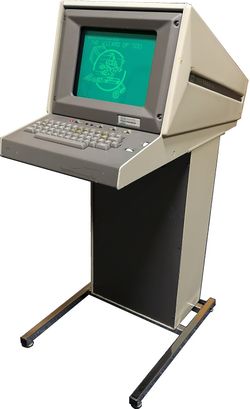

1974
Summer
The Spring Quarter ended and I made a B in Engineering Graphics, a C in Digital computer principles but an F in Circuits. The electrical engineering courses were harder than I expected and required more studying than I put into it. Yeah, that and partying too much.
Working at CIRCA
At the start of summer money was tight, the 20 hours a week working at CIRCA at two dollars an hour just wasn’t enough so I asked my boss at CIRCA if I could work full time and, after checking with the head of the department, said they would hire me full time as Computer Programmer 1 at a rate of $4.07 an hour which came out to a yearly salary of $8498.16. More than double what I had been making. What a relief it was. Even better, as a full time employee of the University, I could take one course each quarter for free and my boss had no problem with me taking time off during the day to take the classes.
At CIRCA I continued to work on MARK-IV programs but also started working with computer graphics which was in its infancy in 1974. Computer graphics at the time consisted mainly of line drawings like blueprints, or graphs. These were drawn on a Calcomp Plotter which was like a giant Etch-A-Sketch in which a pen moved across the paper drawing lines. The plotter itself was three feet wide but not connected to the mainframe, but rather was connected to an antiquated IBM 1401 computer. Programs were written on the mainframe in FORTRAN with the output written to a magnetic tape which then would be taken over to the IBM 1401 computer, put on a tape drive which the 1401 would read and drive the plotter. It was a slow and awkward process, but it worked you usually would get your drawing the next day, maybe two. The datacenter had recently got get a “modern” electrostatic plotter which was like a Xerox machine that took a roll of three feet wide paper. The electrostatic plotter, like the pen plotter, was connected to the IBM 1401 but was much faster than the pen plotter, printing in a minute what took the pen plotter an hour.
 Tektronix
4010
Tektronix
4010
But what interested me more was the Tektronix 4010 graphic terminal. [photo] It was the latest thing in computer graphic displays and CIRCA had one and, with me being the unofficial graphics person, it was in the office I shared with the student programmers. The Tektronix 4010 had what was called a storage-tube display, green in color, 11 inches wide, and again worked like an Etch-A-Sketch. Lines could be drawn on the screen which would remain until, like an Etch-A-Sketch, you pressed an erase key which would clear the screen. The other thing the Tektronix was fast. While the IBM Selectric terminals that we all were using at the time worked at 110 Baud, which is like a fast typist, the Tektronix communicated at 1200 Baud, ten times faster. It was amazing, a little green dot on the screen would zip around the screen faster than a speeding bullet and draw a picture. The only problem all the programs produced output commands to the Calcomp plotter and not the Tektronix. So the one of the first projects I did was write a program to take the output commands for the Calcomp plotter and convert them to the Tektronix. Instead of day to see your drawing you could now see it in a minute after running your program on the mainframe. How cool was that!
Updated: 12-31-2022